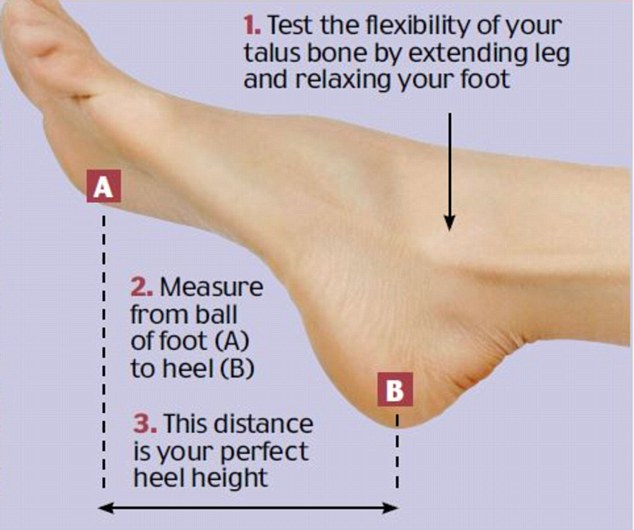
At The Well-Heeled we are constantly on the lookout for any tips and tricks that will ensure comfort and reduce the risk of injury while wearing heels. We have recently reviewed an article written by UK Podiatrist, Emma Supple – Emma has been interviewed on TV and written in other forms of media about her theory on finding the ideal heel height for dress shoes. We applaud Emma as fellow high heel-loving podiatrists for her positive attitude towards women wearing heels. We do have some questions though about her theory though…

Emma calls her theory Perfect Heel Height (PHH). It involves measuring from the front of the foot and the heel when the leg is extended and the ankle relaxed, and calculating the distance between these points to determine the flexibility of the talus bone. While this measurement may provide some useful information about the foot, we are not sure that it’s an entirely foolproof or accurate way to determine ideal heel height. From our experience as Podiatrists, determining a person’s suitability to different heels is not as straight forward as one measurement. Other factors such as general ligament flexibility, calf and muscle tightness, the amount of fatty padding on the bottom of the foot, the shape of the foot (including any deformities or injuries), activity and duration are also important considerations, just to name a few.

Image credit – Emma Supple
We used ourselves as a guinea pigs for this experiment. Ele and I both have very different foot types. I am hypermobile (very flexible!), and truth be told am prone to inversion sprains if my shoes are too high or not stable enough. Ele on the other hand has a really stable foot type. Both of us love to wear heels, but I am definitely the one that complains about my forefoot first. According to Emma though, I should be quite comfortable in a 6 inch heel. Trust me, I would only attempt to wear a six inch heel if I knew I was going to be sitting for the entire evening! This has always been the case, even in my early 20’s when we were all trying to emulate the padded shoulder power suit, magnifying glass necklace and block heels that Madonna did so well. How can you not love Respect Yourself?

Anyway, this is where we start to run into problems with this formula. I am really flexible, and as such my foot relaxes or plantar-flexes quite a long way, which in turn equates to the theory that I can tolerate a six-inch heel. However this very flexibility also means that my foot moves more creating forefoot shearing, therefore increases pain and irritation on the balls of my feet. I also have a long 2nd metatarsal bone, which increases pressure under the joint where my 2nd toe connects to my foot. I get pain in my forefoot very quickly if I don’t choose shoes that offer a lot of ankle support, and the arch of my foot is not supported.

Ele on the other hand has a really stable foot and when her leg and ankle is relaxed her PHH is about 4 inches. Now, Ele can tolerate this heel height very well (and higher), but only because she has stable ankles and a healthy plantar fat pad. Ele can certainly tolerate a more strappy sandal than me due to this, which she will be enjoying this Summer with ease and relative comfort. Lucky her!
So although we would love to think that finding your ideal heel height is as easy as calculating your PHH, we are inclined to think it’s a little more complicated than that. It’s also about educating yourself about your foot type and then learning which shoes suit your foot type – the concept which forms the basis for The Shoe Equation.
Maybe give the PHH theory a go and let us know how you went. We would love to hear from you.
This is the original article mentioning Emma and PHH theory – http://www.dailymail.co.uk/femail/article-3824090/There-formula-finding-heels-won-t-cripple-s-remarkably-simple.html
Until next time,
E&E


